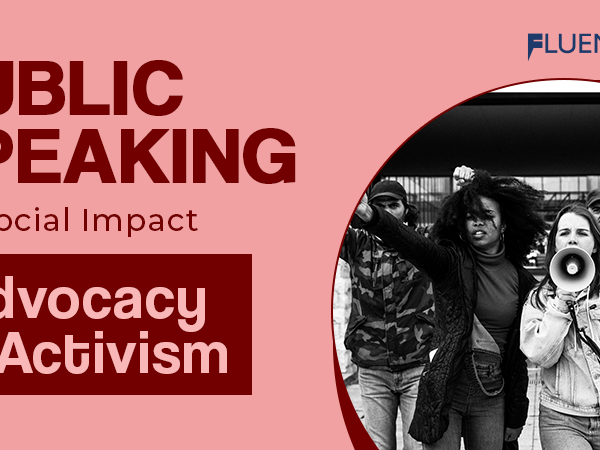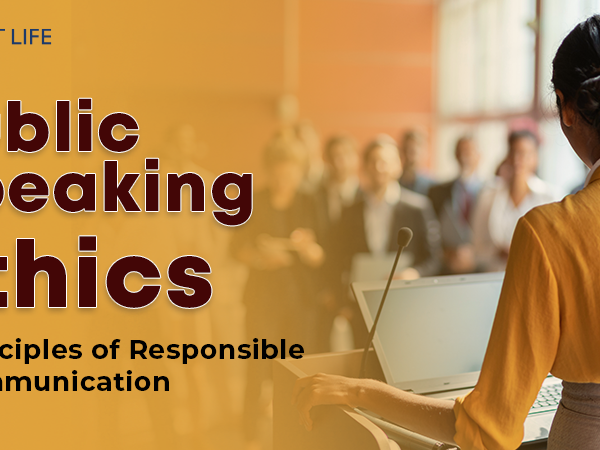Developing self-belief as a public speaker is a gradual process that needs consistent effort and dedication. Confidence in Public speaking, an essential skill in many professional settings, calls for individuals to conquer their fears and communicate their message to the crowd effectively. Here, we’ll investigate practical steps that can assist individuals build confidence as public speakers.
The first step to gaining confidence is thorough preparation. By researching the topic, organizing ideas, and creating a well-structured outline, speakers can equip themselves with knowledge and substance. This prep gives confidence by making sure speakers are knowledgeable and ready to deliver their message competently. Furthermore, practicing the speech multiple times lets speakers become more comfortable with their content and delivery.
Another important part of building confidence lies in understanding the audience. Speakers should take time to learn about the demographics, interests, and expectations of their audience. Tailoring the speech accordingly helps create a bond and engage listeners more effectively. This adaptability not only boosts the speaker’s confidence but also increases the influence of their message.
Visual aids such as slides or props can further boost a speaker’s confidence while captivating the audience’s attention. Using appropriate visuals not only assists in retaining information but also provides structure for both speaker and audience. Visual aids should be crafted thoughtfully to complement the speech without overwhelming it.
In addition, getting constructive feedback from trusted people or attending public speaking courses/workshops can significantly help refine one’s skills as a speaker. Valuable insights from experienced professionals or peers can point out areas for improvement and offer guidance on improving overall presentation style.
Importance of confidence in public speaking
Confidence is vital in public speaking. It captures the attention of the audience and delivers messages successfully. It creates a positive impression and helps connect with listeners.
- To build confidence, one must understand its importance. It boosts self-esteem and increases the ability to influence. It offers courage and combats stage fright.
- To build confidence, preparation and practice before speaking is needed. This gives assurance and allows for smooth delivery.
- Seeking feedback from trusted people helps too. Accept criticism and work on skills to increase confidence.
Maya Angelou is an example of what can be achieved. Despite adversity, she became a renowned author and orator. Confidence changed her life and touched millions. It is a testament to the transformative power of confidence in public speaking.
Building confidence in public speaking step-by-step:
Confidence as a public speaker can be gained by taking small steps. A structured approach can help you get better at speaking and have the assurance to give powerful talks.
- Step 1: Prep!
Start by preparing well. Look into your topic and organize your thoughts. This will help you talk with assurance and confidence. Do multiple practice runs of your speech. - Step 2: Get feedback
To improve, take feedback from people you trust. Share your practice sessions and get helpful advice. Use the feedback to find areas to improve and refine your style. Don’t take it as criticism; see it as a chance to grow. - Step 3: Expand your comfort zone
Gaining confidence is done by expanding your comfort zone. Start with small groups – family and friends – and move to larger audiences. Take part in speaking competitions or join toastmasters clubs for more challenge and to beat stage fright.
Visualization is also helpful. Imagine yourself giving a successful speech with assurance and poise. Visualizing positive results builds confidence and reduces anxiety.
Also Read: Setting SMART Goals for Personal Growth: A Step-by-Step Guide
Overcoming common public speaking challenges
Public speaking can be a scary job for many people. However, with the correct approach and steady steps, it is possible to overcome the typical difficulties related to public speaking.
- Confidence: A lack of confidence is a common issue. To tackle it, it is essential to get ready carefully, practice often, and think positively.
- Nervousness: Nerves before and during public speaking are normal. Deep breaths, visualization techniques, and proper preparation can help to reduce this.
- Lack of engagement: Keeping the audience involved is vital. To beat this, speakers should use stories, ask questions, and use visuals to capture people’s attention.
- Organizing thoughts: It can be hard to organize thoughts and deliver them clearly. An outline, simple language, and practicing transitions can help.
- Overcoming distractions: Distractions such as noise can ruin a presentation. Pick an appropriate venue, think about using tech to manage distractions, and keep your composure when things go wrong.
It takes time and practice to overcome these issues. By gradually working on each part of public speaking and getting feedback from reliable sources, you can gain confidence and become a successful public speaker.
As well as these common challenges, it is essential for speakers to observe their body language. Nonverbal signs such as eye contact, posture, and gestures are important for an interesting speech.
A fun fact about public speaking is that Harvard University’s Graduate School of Education’s research shows that good communication skills are frequently among the most desired qualities for job applicants in many industries.
Also Read: Impact of Physical Fitness: Boost Self-Improvement
Tips for delivering confident speeches
Robyn lacked confidence as a public speaker when she first started. But, she gained self-assurance by following a few tips and challenging herself. Here’s a 5-step guide to help deliver confident speeches:
- Know your audience – Research their background, interests and expectations. Tailor your speech to resonate with them.
- Prepare thoroughly – Write an organized speech outline and practice delivering it multiple times.
- Use body language – Maintain good posture, stand tall and make eye contact. Use hand gestures to emphasize key points.
- Control nerves – Take deep breaths and visualize yourself succeeding. Focus on the message, not anxiety.
- Engage the audience – Involve them in the presentation. Encourage questions and stories.
It takes time and practice to build confidence as a public speaker. Robyn stumbled over her words in the beginning. But, she persevered and now captivates audiences with her words and presence.
Also Read: Top 100 Commonly Used A to Z Phrasal Verbs for English Fluency
Conclusion
Public speaking can be daunting, but practice and gradual steps can help anyone become a confident speaker. Strategies such as thorough preparation, engaging body language, and clear delivery can help individuals overcome their fear.
- To build confidence, preparation is key. Research the topic thoroughly and organize the content logically. Rehearse the speech multiple times to become comfortable with it. Anticipate questions or challenges from the audience and prepare responses.
- Body language is essential. Stand tall, maintain eye contact, and avoid nervous gestures. Pausing at strategic moments throughout will allow for emphasis and give time to breathe.
- Clear delivery is crucial. Speak at a moderate pace. Make pronunciation and enunciation clear. Vary vocal tone and volume to capture attention.
Sarah’s story shows that anyone can succeed as a public speaker. Sarah had stage fright but joined the school debate team. With regular rehearsals, Sarah slowly built her confidence. She developed research skills and learned to deliver persuasive arguments. Eventually, she won several debate competitions. Perseverance and incremental steps can help anyone become a confident speaker. Know More – The Fluent Life
Frequently Asked Questions
FAQs: Building Confidence as a Public Speaker – Gradual Steps to Success
Q1: How can I overcome nervousness while speaking in public?
A: Overcoming nervousness takes practice and preparation. Start by focusing on your breathing, use positive affirmations, and visualize a successful speech. Gradually expose yourself to more speaking opportunities to build confidence.
Q2: How can I improve my public speaking skills?
A: Improving public speaking skills requires practice and feedback. Join local public speaking clubs or organizations, participate in Toastmasters meetings, take public speaking courses, and seek opportunities to speak in front of small groups.
Q3: How can I engage with my audience during a speech?
A: Engaging with the audience involves making eye contact, using gestures, and incorporating audience interaction. Ask questions, encourage participation, and adapt your speech based on their reactions. Connect with the audience on a personal level to keep their interest.
Q4: How can I deal with unexpected mistakes or technical difficulties?
A: Mistakes and technical difficulties are a normal part of public speaking. Stay calm, acknowledge the issue, and have a backup plan. Use humor or stories to ease tension and continue with your speech. Remember, the audience wants you to succeed.
Q5: How can I handle stage fright and fear of judgment?
A: Stage fright and fear of judgment are common, but practice and preparation can help alleviate them. Focus on the message you want to convey rather than worrying about what others think. Remind yourself of past successes and positive feedback to boost your confidence.
Q6: How long does it take to become a confident public speaker?
A: Becoming a confident public speaker varies for each individual. It depends on factors such as experience, practice, and dedication. Consistent effort and gradual improvement can lead to increased confidence over time.






